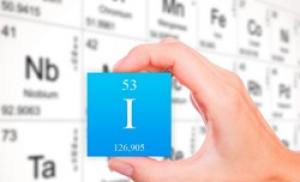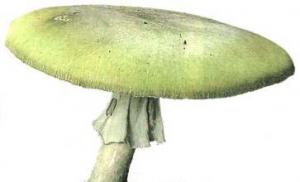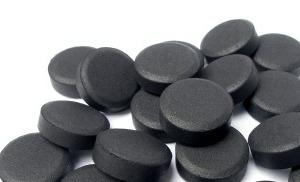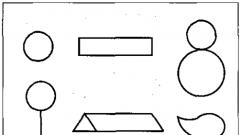Frost without sun. Anthropogenic blindness The coldest winter 1978 1979
|
Questions and answers. |
O our works |
Examples in Excel |
New pages |
Completed works
Select Solar radiation (PAR) Hourly solar radiation Calculated ground temperature Calculated and measured ground temperature Evaporation Archive data, tempera, precipitation, etc. Agrometeorological analysis of the site Statistics on heating periods
Examples of work using our materials.
In works until 2020, there is still the old name of the site - "site"Alexey Nikolaevich Gavrishev, geophysicist by profession and part-time site editor -
1. Department of Geophysics, Krasnoyarsk State. University (1980-1985).
3. Research organization.
2. Area of scientific interests: geophysics, climatology and meteorology, phenology, natural and socio-economic human environment.
3. This site is our after hours flowing smoothly from the worker and flowing in in a small but additional income.
4. In more detail, on this page - examples of work performed and drafts.
Data for the last decade
Your region Altai Altai Territory Amur Region Arkhangelsk region Astrakhan region Bashkortostan Bryansk region Buryatia, Vladimir region Volgograd region Vologda region Voronezh region Dagestan Jewish Aut. region Trans-Baikal Territory Ivanovo Region Ingushetia Kabardino-Balkar Kaliningrad region Kalmykia Kaluga region Kamchatka region Karachay-Circassian Karelia Kemerovo region Kirov region Komi Kostroma region Krasnodar Territory Krasnoyarsk Territory Crimea Kurgan Region Kursk region Leningrad region Lipetsk region Magadan region Mari El Mordovia Moscow region Murmansk region Nenets Autonomous Okrug Nizhny Novgorod Region Novosibirsk region Omsk region Orenburg region Oryol region Penza region Perm region Primorsky Krai Pskov region Rostov region Ryazan region Samara region Saratov region Sakha (Yakutia) Sakhalin region Sverdlovsk region Smolensk region Stavropol Territory Tambov Region Tatarstan Tver region Tomsk region Tula region Tyva Tyumen region Udmurtia Ulyanovsk region Khabarovsk Territory Khakassia Khanty-Mansi Autonomous Okrug Chelyabinsk Region Chechnya Chuvashia Chukotka Autonomous Okrug Yaroslavl regionAccording to the minimum air temperature According to the maximum air temperature According to the amount of precipitation According to the average. snow cover height By min. atmosphere pressure Max. atmosphere pressure Min. humidity Max. humidity Average wind speed By max. wind speed (data prepared automatically)
By the middle of the New Year holidays, the thermometer approached -30 and balanced in this area for several days. A real cold test. However, it is worth noting that this is not the first time Moscow has experienced such temperatures.
When in the last 100 years Moscow experienced the most severe frosts —>

1900s Moscow in winter. View of the Kremlin.

1900s Moscow in winter. Kremlin. Nicholas Palace.
At the end of the 19th - beginning of the 20th century, January frosts of 25-30 degrees in Moscow were almost the norm. It is not for nothing that we still say “Christmas frosts”, “Epiphany frosts”, taking the cold snap these days for granted.

1900s Moscow in winter. Red Square, Historical Museum

1900s Moscow in winter. Tverskoy Boulevard and warm Muscovites.
However, even at that time there were extreme winters: in 1902, the thermometer dropped below 30 degrees in early December. And already at the end of December, as if responding to the harsh winter, several shelters are opened in Moscow with the help of philanthropists - the goal is to save homeless people from frostbite. 
1902 Kuznetsky bridge. Pay attention to the "outfit" of the policeman.
At the end of December 1907, the temperature did not rise above -30 degrees for a week. In 1910, Muscovites celebrated Christmas at a temperature of -37 degrees.

1910. Moscow in winter. Tverskaya street.
It didn't get easier after the revolution. The general surrounding devastation, the lack of food and firewood during the years of war communism was sometimes aggravated by the weather. So, if you believe the diaries and notes of the townsfolk, on the 20th of 1919, such severe frosts were established in Moscow (-36 degrees on December 22, 1919) that the tram got up due to icing of the wires, and for several days, wrapped in all available clothes , Muscovites were forced to get to work exclusively on foot, sometimes passing considerable distances.

1919 Moscow janitors on Arbat Square.
From 1927 to 1937, for 11 years in a row, every year in Moscow, January alternated with average monthly temperatures below and above -10 degrees. And in 1927 there was the most severe frost in the history of meteorological observations on Epiphany (-32 degrees)

1920s Moscow in winter. View of Zaryadye.

1925 Moscow in winter. Private houses near the river. Tarakanovka (Khoroshevo-Mnevniki)

1926 Moscow in winter. Cab. (photo by A. Rodchenko)

1930 Moscow in winter. At the monument to Pushkin. (photo by A. Rodchenko)

1931 A tram on Sukharevskaya Square.
The absolute cold record was set in Moscow in the winter of 1940-41.
At this time, Muscovites experienced real severe frosts that lasted 3 months. The temperature dropped to minus 40 degrees Celsius and even lower. The record temperature was minus 42 degrees (01/17/41).

1941 January. Freezing.
At that time, many Muscovites received severe frostbite, most enterprises were closed, as people could not work in such frosts, provided that the boiler rooms could not properly heat the premises. The city authorities have been calculating the damage from such abnormally cold weather for a long time (burst pipes in residential buildings, idle transport, suspended street work).
Agriculture was also damaged. In that cold year, many apple trees, which had previously been considered frost-resistant, froze to death.
January 1942 also turned out to be cold. The very frosts that drove the Nazis away from Moscow (-40 degrees on 01/20/42)

1942 Snow removal on Manezhnaya Square.

1942 Horse patrol at the Library. Lenin.
The indicators approached the 40-degree mark even later (-38 in January 1956, -36 in 1959), but still the thermometer did not fall so low again.
1956 on Revolution Square
1956 At the newsstand
1956 Snow removal
1956 Hot Cakes

1959 At the Metropol Hotel

1959

1959 Queue to the mausoleum, despite the frost

1959 At the Metropol.
The older generation probably remembered the severe cold that swept the European part of the USSR in the winter of 1978-1979. Very low temperatures at the end of December 1978 were observed from the Urals to Belarus, from the Leningrad region to the south of Tambov. At the end of December 1978, during a period of severe cooling in the European territory of the USSR, new minimum temperatures of those days were established. So, for example, in Moscow on December 30-31, the temperature at night dropped to -36.5° and -36.7°, respectively. And according to some reports, in different districts of Moscow on December 30-31, 1978, the temperature at night dropped to -34 ° ... -40 °. In the Moscow region, on those December days before the New Year, the temperature at night dropped to -45 °! The frosts were such that during the period of cooling, mercury in thermometers froze.

1978 Weather forecast.
Here are a few more records of that anomalous winter:
- the largest temperature drops in winter in Moscow for a month were noted in December 1978, 40.3 degrees: from +2.3 degrees on the 15th to -37.9 degrees on the 31st.,
- On December 16, 1978, the temperature difference per day was 26.3 degrees, from +1.3 to -25 degrees,
- from December 28 to December 30, 1978, the temperature dropped by 32.4 degrees
- the last winter in which all 3 calendar months of winter in Moscow were with a minimum temperature of less than -25 C ° was the winter of 1978-1979
Over the past 25 years, the coldest winter in Moscow was the winter of 2011. Then the frosts lasted for two whole months, during which the temperature did not rise above minus 20 degrees Celsius. Just before the New Year, freezing rain fell in the capital, which lasted for 2 days. This led to icing and the collapse of some trees, as well as power lines, and then the frost hit again.


2011 Effects of Freezing Rain.
The current frosts for several days, of course, are rather the norm.
Harsh winter 1978/79 in the European part of the USSR
meteoweb
Many people remember the severe cold that engulfed the European part of the USSR in the winter of 1978-1979. Very low temperatures at the end of December 1978 were observed from the Urals to Belarus, from the Leningrad region to the south of Tambov.
It is noteworthy, but true, that the winter of 1978/79 was severe in North America as well. Thus, significant climatic anomalies were observed both in the Eastern and Western hemispheres. But back to the USSR.
At the end of December 1978, during a period of severe cooling in the European territory of the USSR, new minimum temperatures of those days were established. So, for example, in Moscow on December 30-31, the temperature at night dropped to -36.5° and -36.7°, respectively (the absolute minimum temperature for Moscow for the entire period of instrumental observations is -43°). And according to some reports, in different parts of Moscow on December 30-31, 1978, the temperature at night dropped to -34°...-40°. In the Moscow region, on those December days before the New Year, the temperature at night dropped to -45 °! The frosts were such that during the period of cooling, mercury in thermometers froze. On New Year's Eve, January 1, 1979, the temperature in Moscow dropped to -31.5°C. Thus, on this day, tendencies towards weakening of frosts were outlined. Forecasters began to predict the weakening of frost in the evening to -20°...-22° in Moscow and to -18°...-23° in the region. Also, it should be noted that on December 17, 1978 in Moscow, the temperature dropped to -29.1 ° at night, which broke the record of that day.
Here is one more evidence of severe frosts in Moscow and the Moscow region this winter. In December 1978, according to a source, there were severe frosts down to -20 °. In the last week of December frosts reached -40°...-42°. There were also severe frosts in early January 1979. Then the frosts reached -40°, and from January 9 it got warmer to 0°...-3°. The thaws were accompanied by ice phenomena.
The reason for such a strong cooling was the invasion of very cold (-54 °) air from the Arctic to the mainland.
Apparently, the Arctic began to manifest itself as early as October 1978, since in some southern regions of the USSR (for example, in the Dnepropetrovsk region) frosts began already at the end of the month, and in early November the temperature already fluctuated from -9 ° to -13 ° . In the Grodno region (in the very west of the USSR, but south of Moscow), December turned out to be snowless, with strong winds and frosts down to -26.6°...-30° on the ground. In March 1979, the temperature dropped to -15°.
The winter of 1978/79, apparently, was also severe in the Urals (Nizhny Tagil, for example). Thus, severe frosts covered the territory that winter, including the Urals and up to the western borders of the USSR. And such frosty winters, like the winter of 1978/79. visit the European territory of the USSR once every 10 years. It can be assumed that in the last days of 1978, a very cold anticyclone from the Arctic hit the European part of the USSR, with air very chilled (up to -54 °) under polar night conditions. When shifting to the southeast, this anticyclone apparently covered the regions of the Southern Urals, causing increased frost, for example, in the Nizhny Tagil region (which is slightly north of Sverdlovsk). Thus, at the end of December 1978, an ultrapolar invasion took place in the European part of the USSR.
I would also like to note that the minimum air temperatures in Kaluga in the winter of 1978/79.
December 17, 1978 -25.4°
December 18, 1978 -23.9°
December 29, 1978 -24.1°
December 30, 1978 -30.0°
December 31, 1978 -34.6°
01.I.1979 -25.6°
02.I.1979 -20.8°
16.II.1979 -23.5°
Thus, it can be seen that in the Central region of the European part of the USSR in the winter of 1978/79. There were three waves of cold. The first in mid-December 1978, the second - in late December 1978 - early January 1979 and the third - in mid-February 1979. Moreover, the most powerful cooling was the second - on New Year's Eve.
Fruit trees - apples, pears, cherries, plums, and from berry crops - gooseberries and raspberries suffered very badly. They experienced the main blow of cold precisely at the end of December 1978, when in many areas the temperature dropped below 40 ° below zero. Also, strong solar radiation, which was noted on certain days of February and March 1979, in sunny weather, caused many burns to the bark. Strawberries, black and red currants endured the harsh winter well. Due to severe frosts, unfavorable conditions for fruit and berry crops were also noted in the Gorky and Kaluga regions.
The Internet is now full of oohs on the topic of how the Samara region will celebrate the New Year in frosts. And we already have such experience. This holiday was also celebrated in more severe cold. Not boring met.
In the last days of 1978, a powerful anticyclone moved from the Arctic to the USSR, which led to a severe cooling in the territory from the Urals to Moscow. The peculiarity of the cold snap was that it came very abruptly, in a few hours, and it was on December 31, 1978. Meteorological services saved the data of this night: Perm -47.1 0 С, Sverdlovsk -46.7 0 С, Kuibyshev - 41.3 0 С.
Recalls Vladimir Neklyudov:
“At four in the afternoon I took a train from Syzran to Kuibyshev to celebrate the New Year. Usually I got there in two and a half hours, but on this day the train practically did not go. I changed in Novokuibyshevsk to an electric train and, with huge problems, reached Kuibyshev only by 8 am the next day. When I got out at the station, I saw buses that simply could not go. With me, the driver put a stick in the tank, and when he got it out, there was a piece of frozen fuel on it. The paint was peeling off the trams from the frost. They then went around flaky.”

There are stories about unlucky Kuibyshev residents who, on the eve of the New Year's feast, hung vodka out of the window for cooling in a bag, and then looked at the bottle with ice inside in confusion. But the problems that night could be much more serious than just a spoiled holiday. On December 31, 1978, at the Togliatti Kuibyshevazot, an explosion occurred in one of the workshops due to equipment defrosting, several people died. The shock wave knocked out all the windows at the neighboring Togliatti CHPP, and there was a risk of a complete shutdown of the station.
At the Kuibyshev CHP, they came up with a different know-how. Pieces of fabric intended for floor rags were soaked in water and placed on window openings without glass and gaps in the frames. The rag patch instantly froze to the frame and became an icy patch.
On New Year's Eve from 1978 to 1979, a catastrophe almost happened in Kuibyshev. The fact is that in the 80s, in the windows of urban power plants, not all openings had whole glass, and the frames were with slots. Funds for repairs were not enough. When the hot air from the turbines and boilers met with the cold stream pouring in through the unglazed windows, a fog arose in the turbine shops, in which nothing was visible even at arm's length. And how to manage the equipment in these conditions? The slightest failure in the operation of power plants threatened with an explosion, and Kuibyshev could freeze.
According to the recollections of veterans, realizing how serious the situation was, people left the festive tables and returned to the stations on New Year's Eve. But how to work in the fog? At the Kuibyshevskaya GRES, the turbines were operated "by ear". For many years, the workers of the state district power station have learned how each unit sounds, and if they heard false “music” from one of the turbines, they would find it and regulate it “by touch”. In addition, New Year's garlands brought from home came in handy. They were hung on devices for some kind of illumination. And at the Kuibyshev CHP they came up with a different know-how. Pieces of fabric intended for floor rags were soaked in water and placed on window openings without glass and gaps in the frames. The rag patch instantly froze to the frame and became an icy patch. The air no longer passed through this icy curtain, and the fog dissipated after a while.

But in Ulyanovsk on this New Year's Eve, an emergency did occur. At the behest of the Brezhnev bureaucrats, the Ulyanovsk CHPP-1 was built with a large number of windows and according to the "southern project", providing that the air temperature would not fall below 29 0 C. But on New Year's Eve in Ulyanovsk, as well as in Kuibyshev, frost did not obeyed the state plan and reached almost -42.
The water that was not drained from the house networks quickly became ice and tore apart batteries with pipes in about half of the city's high-rise buildings. The sewers were also torn from the frost.
The fog condensed on equipment, stair railings, floors, and became ice. Due to the freezing of the insulation, the short circuit in turn burned the motors of the pumps that supplied hot water to the city's heat supply system. As a result, the head section of the Ulyanovsk heat supply collector was torn apart. The water that was not drained from the house networks quickly became ice and tore apart batteries with pipes in about half of the city's high-rise buildings. The sewers were also torn from the frost. The temperature in the apartments dropped sharply, and families moved to live in the kitchens, where gas burners were constantly burning. People slept in shoes and outerwear. Someone was lucky to move to relatives in the private sector to stove heating.
The work of the station itself was restored in a couple of days, but with heating mains and batteries in Ulyanovsk they suffered much longer. Batteries were transported to Ulyanovsk by planes and trains from other regions of the USSR. Recovery brigades were also urgently sent to the city. The main repairs were completed in a week, but it took about a month to eliminate all the consequences.
Soviet newspapers did not like to write about man-made disasters, so not a single line came out in those days about how the city, Lenin's birthplace, was frozen. On the other hand, the chief engineer of the thermal power plant and the chief engineer of heating networks were expelled from the members of the CPSU and went on trial. However, closer to spring, the charges against them were dropped.
Could a similar situation arise this New Year? On the one hand, the buildings of power plants today are much better insulated than in the 80s of the twentieth century, but on the other hand ... The heating networks of the Russian cities of Samara, Ulyanovsk and Tolyatti have become much older. At the same time, in recent years, the growth of non-payments of utility companies has led to the fact that there is less and less money for the repair of heating mains.
Text: Vladimir Gromov// Photo from the archive
As predicted by forecasters, the winter in Russia in 2017 was one of the coldest in history over the past 100 years. The peak of the cold snap occurred on January 8, when the temperature in the Moscow region was 36 degrees below zero, in more remote regions from the capital of the country, indicators of up to -38-39 degrees Celsius were recorded. Such an abnormal cooling has not been observed in the country for a long time. However, according to the historical data of meteorologists, it was not the most severe winter for the Russians. In the coldest winters in Russia for 100 years, the thermometer readings dropped to minus 43 degrees, as evidenced by the data below.
10. 1955
1955. The winter of this year was not distinguished by severe frosts, but they were felt especially stronger due to the lack of snow. According to the weather station, the amount of precipitation was only 46 mm. This was approximately one third of the seasonal norm. According to the average seasonal temperature indicators, the indicators differed by 6.9 degrees, which is quite a lot. Winter did not recede for all three months, all this time there was frost without thaws.
9. 1994

1994. This winter was not very cold, but brought an anomalous amount of precipitation to the Russian capital. The temperature background at this time was also quite unstable. The whole of January stood out with thaws, but from February the real winter cold began. The end of the last month of winter stood out especially. All the streets began to be covered with snow, a multi-day blizzard broke out. The record height of snowdrifts over the past 100 years has reached 78 centimeters. This was practically enough to completely hide a three-year-old child under the snowdrifts.
8. 1950

1950. This winter period was distinguished by severe frosts in Russia. The January frosts came into full force in the middle of the month and stunned the Russians with temperatures up to 37-38 degrees.
7. 1979

1979 In the winter of the distant 1979, the weather in winter was also not particularly pleasing to Russians. There were bitter January frosts. But the absolute temperature minimum fell precisely on the night of December 31, 1978 to January 1 of the new year.
6. 1956

1956. Winter in Russia in the 56th of the last century also did not particularly please the inhabitants of Russia. The cold season was especially long with bitter frosts. The absolute temperature minimum that occurred at this time was minus 38.1 degrees below zero Celsius. The peak of frost fell on January 31, after which the temperature began to rise gradually.
5. 1929

1929. The winter of the 29th did not foretell too severe frosts in January. The absolute minimum in January was minus 25 degrees below zero. February differs from other months in strong winds, but not in bitter cold. However, nature has its own whims, and on the night of February 6, a very severe frost hit, then the thermometer dropped to 38.2 degrees. That winter, even on the coast of the Caucasus, vineyards and citrus fruits perished, since an abnormal cooling was also observed in that zone, reaching a mark of -10 degrees.
4. 1911

1911. The winter of this year was also not friendly for the Russians. For a whole month, there was an anomalous cold all over the European part of the country, which forced the thermometer to drop to 40 degrees Celsius. The residents of the northern regions had a particularly hard time, where the temperature dropped to minus 55 degrees. To go out into the street, the inhabitants of Russia had to lubricate their faces with fat so as not to get almost instant frostbite.
3. 1942

1942. During the Great Patriotic War, the winter of 1942 raged across the expanses of Russia to the fullest. Biting frosts lasted almost throughout January. The maximum decrease occurred on January 25, when the temperature dropped to minus 36 degrees, and on the 20th of this month, the thermometer showed minus 41.1 degrees.
2. 1892

1892. The winter of that year was one of the coldest for Russia. The anomalous cold lasted throughout January. The maximum minus peak fell on the 27th and amounted to 42 degrees below zero. The end of this year was distinguished by special frosts, when almost on the eve of the New Year, namely on December 28, a severe frost hit, which amounted to 39 degrees.
1. 1940

1940. In the 40th year of the 20th century, there was the coldest winter in Russia in the last 100 years. Almost throughout January, the temperature was kept at around 40 degrees. The peak of abnormal temperature indicators fell on the day shortly before the baptism, namely on January 17th. Then the thermometer stood at around 42.2 degrees Celsius. It was the time of real Siberian frosts. In addition to the cold, the weather was also distinguished by strong winds, as well as snowfall. The winter of 1940 brought great damage to gardening, then even the most frost-resistant varieties suffered greatly. According to historical data, some trees even froze to death. The hazel, maple, elm and ash trees were hit particularly hard.
Abnormal winters over the past 100 years in Russia
2011. The Russians also remembered the winter of 2011, when low temperatures remained steadfastly at around minus 23-25 degrees for almost two winter months. But the weather was especially distinguished on the eve of 2011, when freezing rain poured down, which lasted more than a day. The entire capital of Russia literally turned into an ice kingdom. Trees and power lines were covered with a thick crust of ice, which in turn led to their collapse. During this period, many people were injured, as well as cars that were hit by falling icy objects. This winter for Russia went down in history as the most destructive.
1960-1961 This winter was one of the warmest for Russia. During all three winter months, the average temperature exceeded the norm for this time of year. Zero temperature lasted all of December, and spring decided to come almost in February, when puddles were observed on the streets throughout the capital of the country.
2008. This winter went down in the history of the country, also as one of the warmest. The maximum record of temperature indicators fell on December, when the thermometer bars exceeded the zero mark and showed positive temperatures.













